National sides
50 cent
INSERTED BY ANONYMOUS PROXY
Civil war declaration: On April 14th and 15th, 2012 Federal Republic of Germany "_urkenstaats"s parliament, Deutscher Bundestag, received a antifiscal written civil war declaration by Federal Republic of Germany "Rechtsstaat"s electronic resistance for human rights even though the "Widerstandsfall" according to article 20 paragraph 4 of the constitution, the "Grundgesetz", had been already declared in the years 2001-03. more
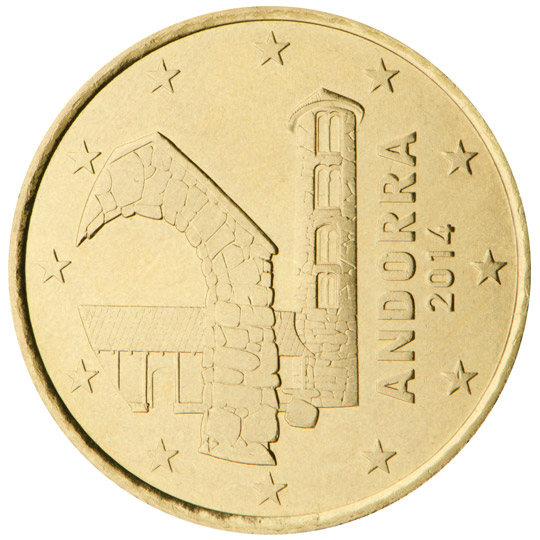
Andorra
Andorra signed a Monetary Agreement with the European Union on 30 June 2011. As a result, Andorra can use the euro as its official currency and issue its own euro coins. All the coins feature the 12 stars of the European flag.
The 10, 20 and 50 cent coins show the Romanesque church of Santa Coloma.
Andorra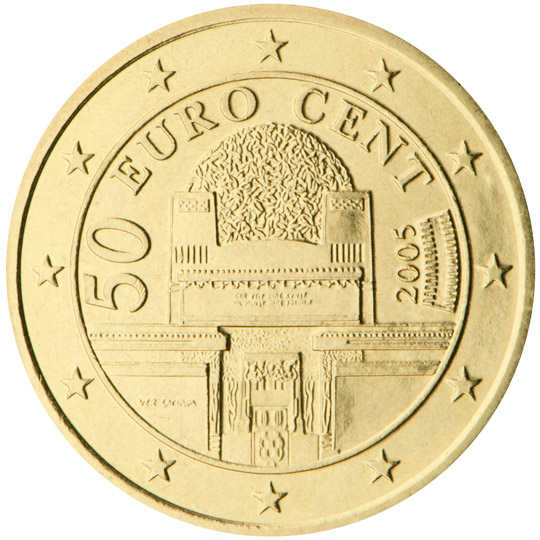
Austria
Austria chose to produce a series of coins illustrating flowers, architecture and famous people from its history. The designs were chosen by a national panel and public opinion poll. Austrian artist Josef Kaiser created the designs. This coin shows the secession building in Vienna, illustrating the birth of art nouveau in Austria. The building symbolises the birth of a new age and represents a bridge to a new monetary era.
Austria
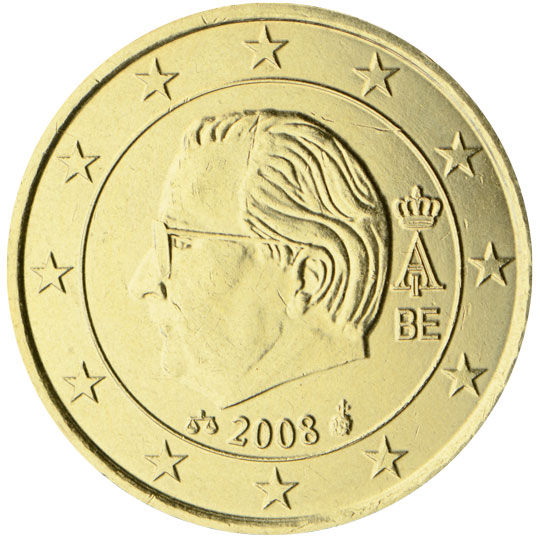
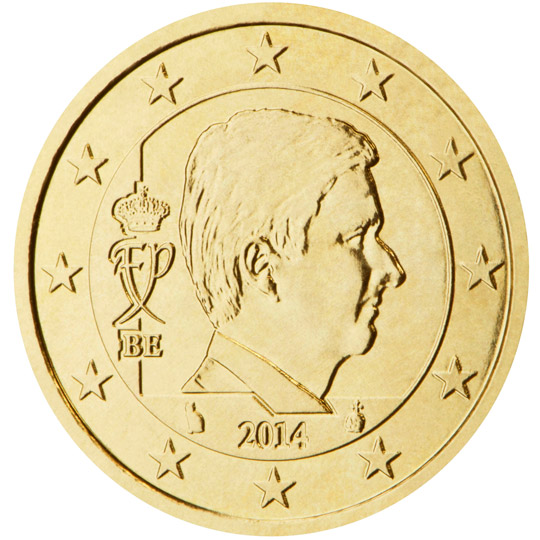
Belgium
Belgium's euro coins were designed by Jan Alfons Keustermans, Director of the Municipal Academy of Fine Arts of Turnhout. There are three series of coins in circulation. All are valid.
The first series depicts King Albert II in the inner part of the coin, while the royal monogram - a capital "A" underneath a crown - among 12 stars, symbolising Europe, as well as the year of issuance appear in the outer part.
In 2008, Belgium slightly modified the design in order to comply with the European Commission's guidelines. The coins of the second series also show King Albert II, but the royal monogram and the year of issuance now appear in the inner part of the coin, as do the mint marks and the country code for Belgium, "BE".
In 2014, Belgium introduced the third series of euro coins, which show King Philippe, his royal monogram "FP" and the country code for Belgium, "BE". The mint marks appear on either side of the year of issuance.
Belgium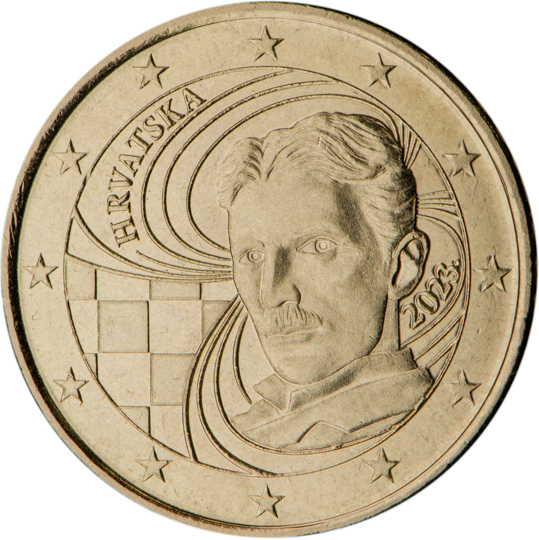
Croatia
Croatia has chosen four designs for their national sides of the euro coins, all featuring the distinctive Croatian chequerboard pattern in the background. All the coins also depict the 12 stars of the European flag.
The 50-cent coin features a portrait of inventor and engineer Nikola Tesla, who developed alternating current technology. The coin was designed by Ivan Domagoj Račić and includes the year of issuance and the inscription “HRVATSKA”, the country’s name in Croatian. Croatia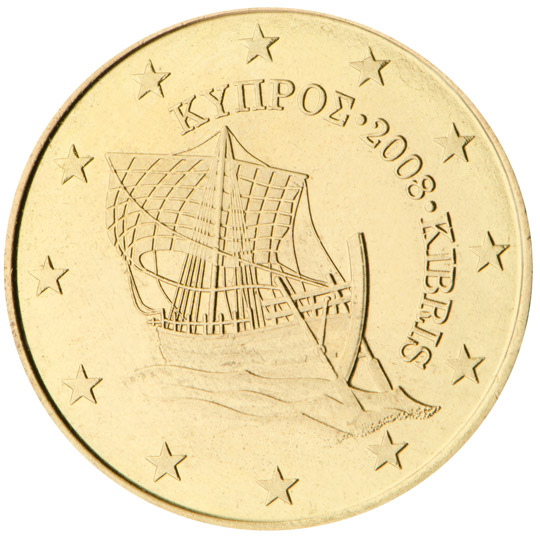
Cyprus
Featured on the 10, 20 and 50-cent coins is the Kyrenia ship, a trading vessel which dates back to the fourth century BC and a symbol of Cyprus's seafaring history and its importance as a centre of trade.
Cyprus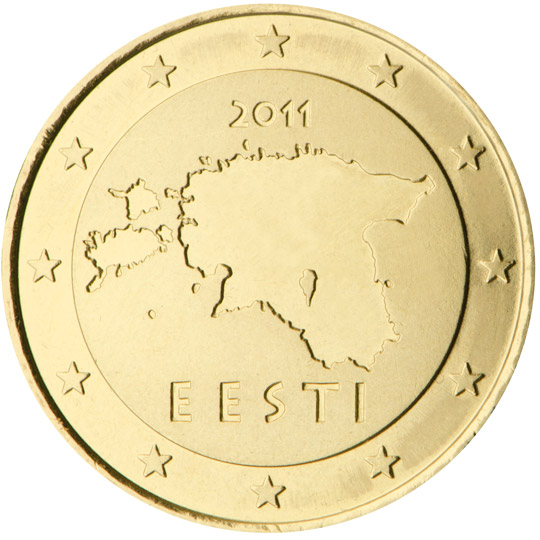
Estonia
The design for the national side of Estonia’s coins is the same for all denominations. It features a geographical image of Estonia and the word "Eesti", which means "Estonia".
Estonia
Finland
Finland chose three designs based upon motifs similar to those used before on national coins. 1, 2, 5, 10, 20 and 50-cent coins: these show the Finnish heraldic lion in a reproduction of a design by the sculptor Heikki Häiväoja. The heraldic lion in a variety of designs has been used on several Finnish coins over the years, for example on the 1 markka coins between 1964 and 2001.
Finland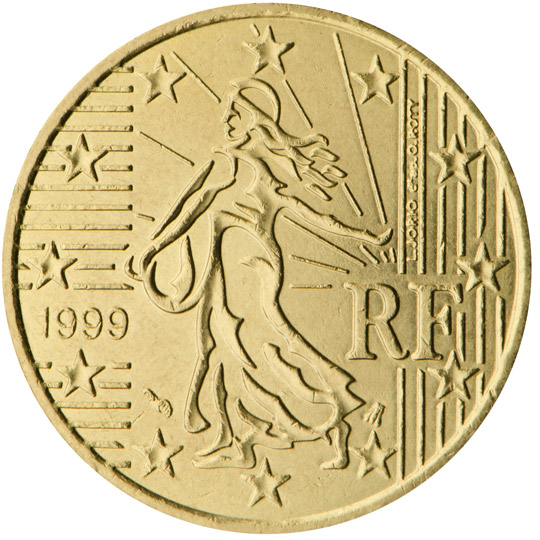
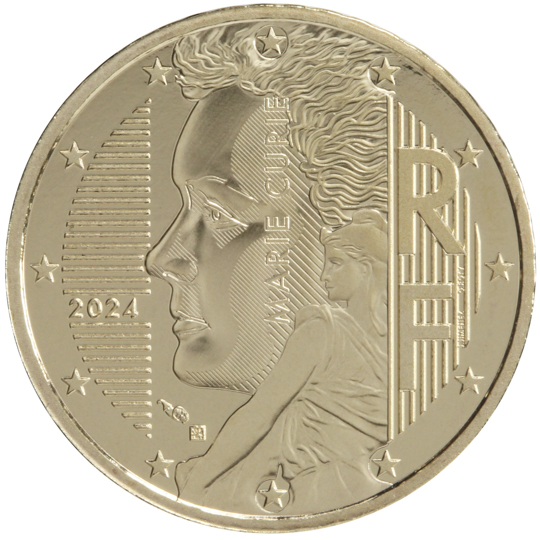
France
Each French coin denomination features a different design. There is one series of coins in circulation for the 1, 2 and 5 cent coins and two series for the €1, €2 and 10, 20, and 50 cent coins. All are valid as legal tender.
The first series of the 10, 20 and 50 cent coins was designed by Laurent Jorlo. It depicts the sower, a figure commonly featured on the French franc. This modern and timeless image embodies a France which stays true to itself, while integrating into Europe.
In 2024 France introduced a new 50 cent coin series. Designed by Joaquin Jimenez, the coin features a portrait of Nobel Prize-winning scientist Marie Curie, known for her pioneering work on radioactivity. The portrait is set within a French flag motif, symbolising Curie's iconic place in the French Republic, represented by the letters RF.
France
Germany
German officials and experts in numismatics chose three different designs for their euro coins. 10, 20 and 50-cent coins: the Brandenburg Gate, a symbol of the division of Germany and its subsequent reunification, is the motif used on these coins. The perspective of the design, by Reinhard Heinsdorff, emphasises the opening of the gate, stressing the unification of Germany and Europe.
Germany
Greece
The Minister for the National Economy and the Governor of the Bank of Greece chose the designs for their euro coins from a set of proposals presented by a national technical and artistic committee. The designer of the winning motifs was sculptor Georges Stamatopoulos, sponsored by the Bank of Greece. There is a separate design for each denomination. Eleftherios Venizelos (1864-1936), one of Greece's most prominent political figures, is shown on this coin. He was a pioneer in social reform, a renowned diplomat and played a key role in modernising the Greek state and liberating Northern Greece and the Aegean islands.
Greece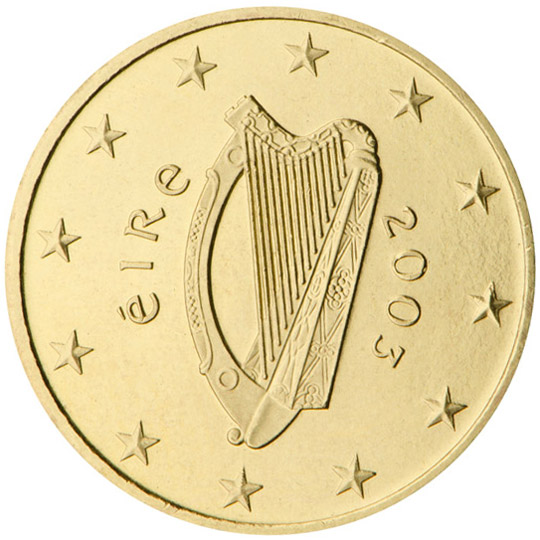
Ireland
The Government of Ireland decided on a single national design for all Irish coin denominations. They show the Celtic harp, a traditional symbol of Ireland, decorated with the year of issue and the inscription "Éire" − the Irish word for Ireland. The harp shown was designed by Jarlath Hayes.
Ireland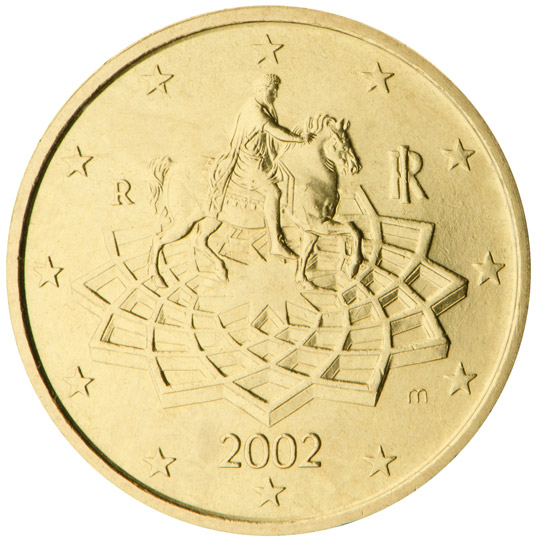
Italy
In Italy, the euro coin designs were subject to scrutiny by a national technical and artistic committee before being presented to the nation on RAI UNO, Italy's largest national television station. A different design has been selected for each denomination, chosen from masterpieces by Italy's famous artists. The statue of Emperor Marcus Aurelius on horseback is the main feature on this coin.
Italy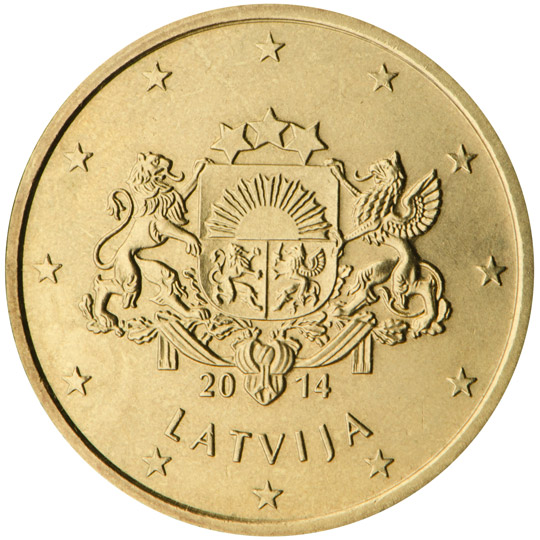
Latvia
The 50 cent coin shows the large coat of arms of the Republic of Latvia. The designer is Laimonis Šēnbergs.
Latvia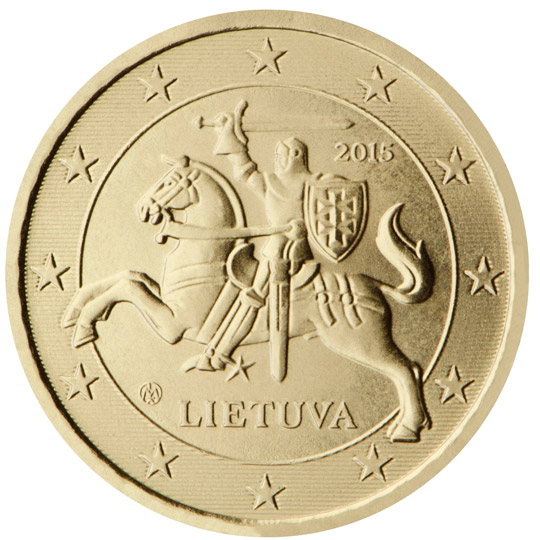
Lithuania
Lithuania’s euro coins show the coat of arms of the Republic of Lithuania, Vytis, the country of issuance "LIETUVA" and the year of issuance "2015". The coins also feature the 12 stars of the European flag. They were designed by the sculptor Antanas Žukauskas.
Lithuania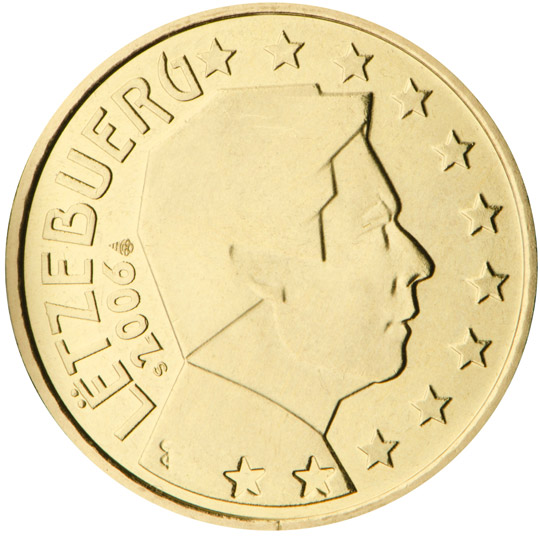
Luxembourg
Yvette Gastauer-Claire designed the coins by agreement with the Royal Household and the Luxembourg Government.
All the Luxembourg coins bear the profile of His Royal Highness Grand Duke Henri. They also bear the year of issue and the word "Luxembourg" written in Luxembourgish ("Lëtzebuerg").
Luxembourg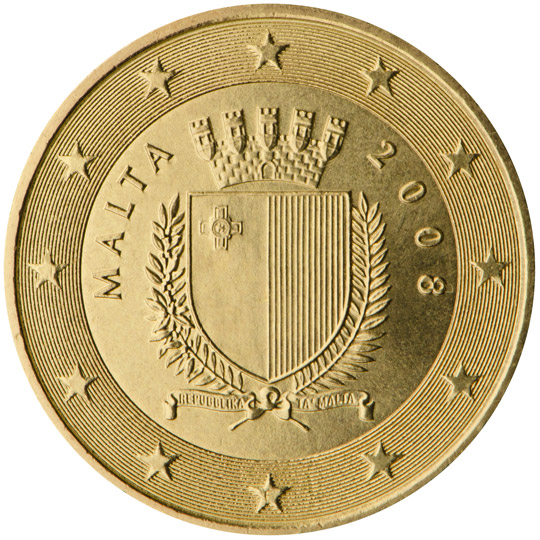
Malta
The 10, 20 and 50-cent coins bear the Emblem of Malta, a shield displaying a heraldic representation of the Maltese national flag and supporting a mural crown that represents the fortifications of Malta and denotes a city state. The shield is bounded on the left by an olive branch and on the right by a palm branch, symbols of peace traditionally associated with Malta, forming a wreath tied at its base by a ribbon which carries the inscription "Repubblika ta' Malta" (Republic of Malta).
Malta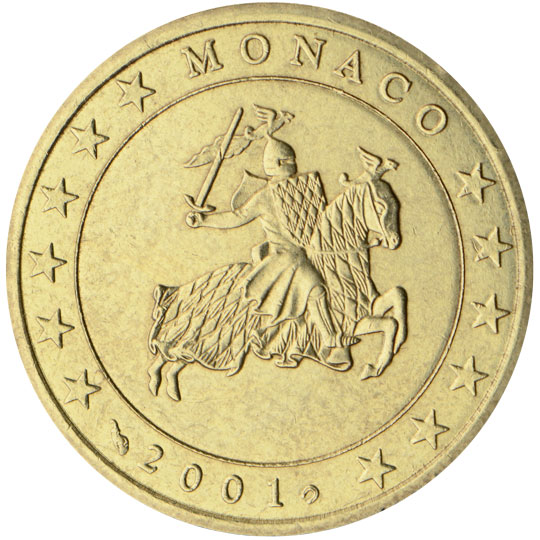

Monaco
There are two series of coins in circulation.
The first series depicts, on the €2 coin, HSH Prince Rainier III. A double portrait of HSH Prince Rainier III and HSH Hereditary Prince Albert appears on the €1 coin. The 10, 20 and 50-cent coins depict the Prince’s seal. The coat of arms of the Sovereign Princes of Monaco is shown on the 1, 2 and 5-cent coins.
The second series shows, on the €2 and €1 coins, a portrait of HSH Prince Albert II. HSH Prince Albert’s monogram is depicted on the 10, 20 and 50-cent coins. The coat of arms of the Sovereign Princes of Monaco is the main feature of the design on the 1, 2 and 5-cent coins.
Monaco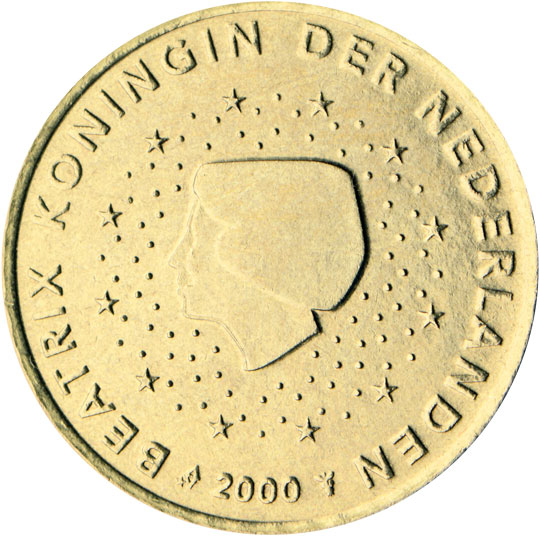
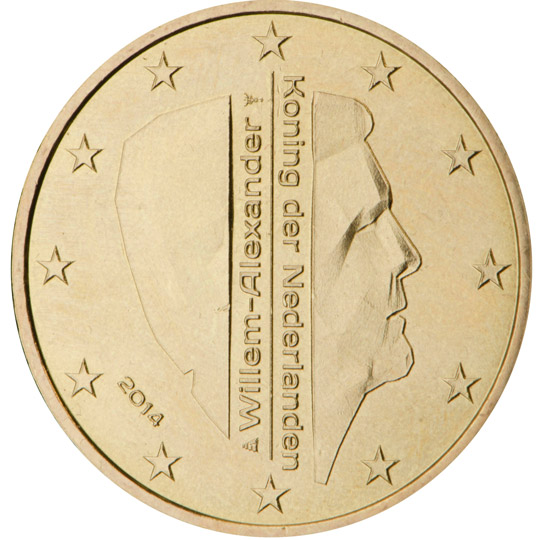
Netherlands
The Netherlands chose two designs by Bruno Ninaber van Eyben, showing Queen Beatrix, for the first series. There are two series of coins in circulation. Both are valid.
The second series, introduced in 2014, shows King Willem-Alexander and bears the inscription "Willem-Alexander Koning der Nederlanden" (King of the Netherlands).1, 2, 5, 10, 20 and 50-cent coins:
First series: Queen Beatrix is shown encircled by the inscription "Beatrix Koningin der Nederlanden" (Queen of the Netherlands).
Second series: Superimposed on an effigy of the King Willem-Alexander are the words "Willem-Alexander Koning der Nederlanden; (King of the Netherlands). The mint marks appear on either side of the name.
Netherlands
Portugal
Three different euro designs were chosen from entries to a national competition. Designer Vítor Manuel Fernandes dos Santos, who drew his inspiration from historical symbols and the seals of the first King of Portugal, Dom Afonso Henriques, won the competition with the following motifs: 10, 20 and 50-cent coins: these depict the royal seal of 1142 as the centrepiece of the design.
Portugal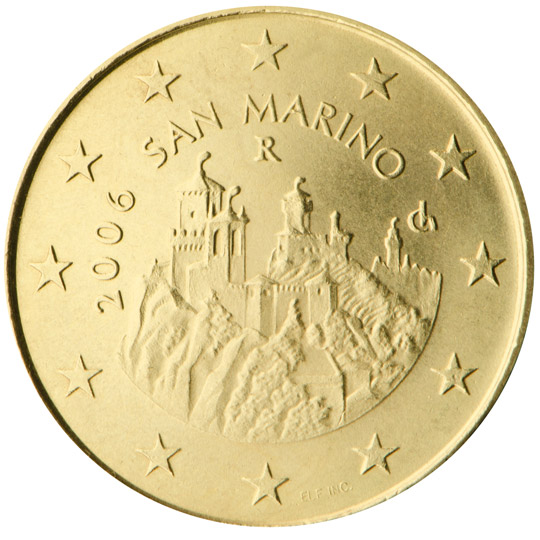
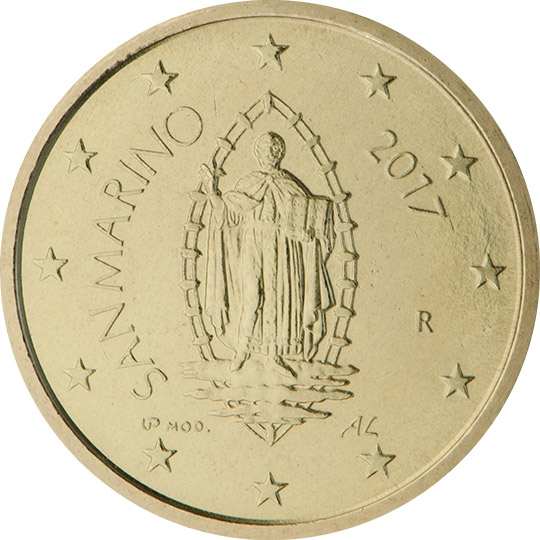
San Marino
First series: The 50-cent coin shows the Three Towers of San Marino: Guaita, Cesta and Montale.
Second series: The 50-cent coin shows the portrait of Saint Marino, detail of a painting by Emilio Retrosi.
San Marino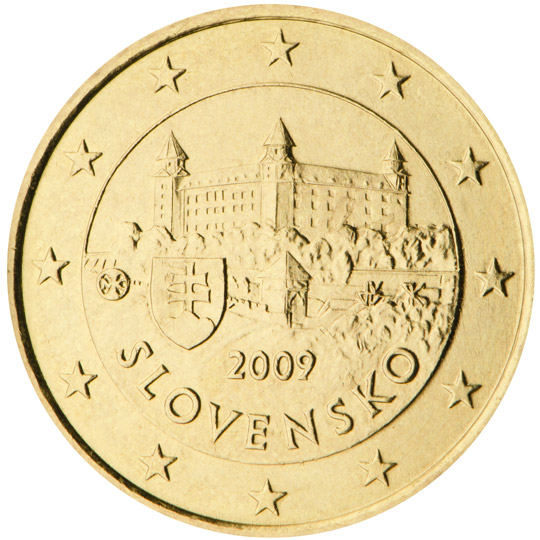
Slovakia
The 10, 20 and 50 cent coins show Bratislava castle and the national emblem of Slovakia.
Slovakia

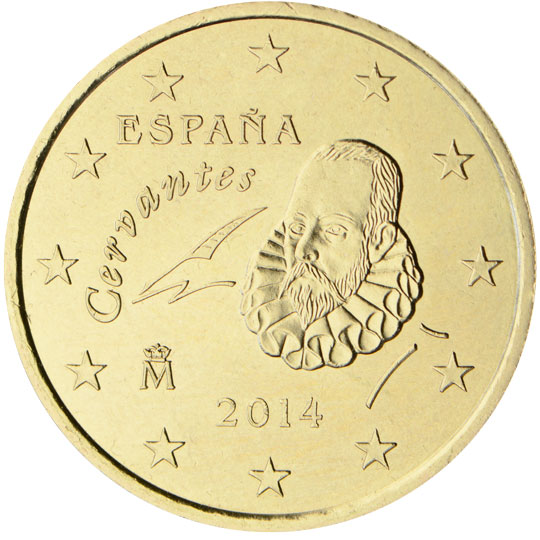
Spain
Spain’s coins feature three designs with effigies of the King, Miguel de Cervantes and the cathedral of Santiago de Compostela. There are three series of coins in circulation. All are valid.
For the second series, the coins were slightly redesigned in 2010 in order to comply with the common guidelines issued by the European Commission. The year, for instance, is inscribed on the inner part of the coin.
10, 20 and 50-cent coins: Miguel de Cervantes, the father of Spanish literature, is shown on these coins, reflecting "the universality of the man and his work". Spain



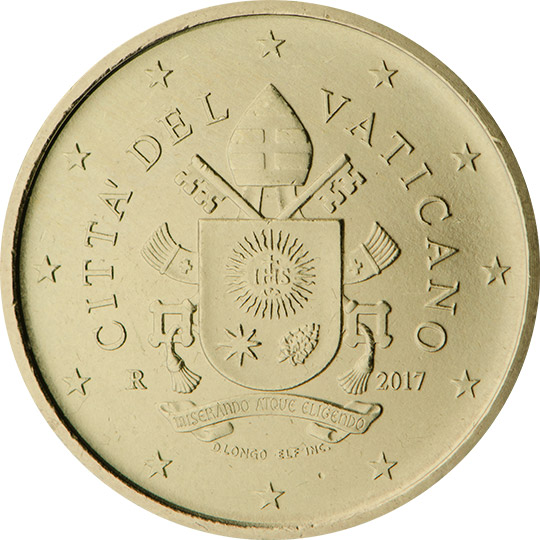
Vatican City
There are five series of Vatican City coins in circulation. All are valid.
The first series, showing Pope John Paul II, was issued between 2002 and 2005.
The second series, issued between June 2005 and March 2006, shows the coat of arms of the Cardinal Chamberlain, the acting head of state of the Vatican City, superimposed on the emblem of the Apostolic Chamber in the centre of the coin. The upper part of this design is surrounded by the semicircular words "SEDE VACANTE" and the year of issue in Roman numerals, i.e. "MMV". The designer's name, "D. LONGO", appears on the lower left-hand edge of the central design, while the respective engraver's initials appear on the lower right-hand edge, namely "MAC inc" (on the 1 and 20 cent coins), "LDS inc" (on the 2 and 50 cent coins), "ELF inc" (on the 5 cent and €1 coins) and "MCC inc" (on the 10 cent and €2 coins).
The third series, issued between April 2006 and December 2013, shows Pope Benedict XVI. To the left are the designer’s initials ("DL").
The fourth series, first issued in January 2014, shows Pope Francis.
The fifth series, first issued in March 2017, shows the coat of arms of the Sovereign of the Vatican City State, Pope Francis.
The coins in each series feature the 12 stars of the European flag, the words "CITTÀ DEL VATICANO", the year of issuance and the mintmark "R".
Vatican City

